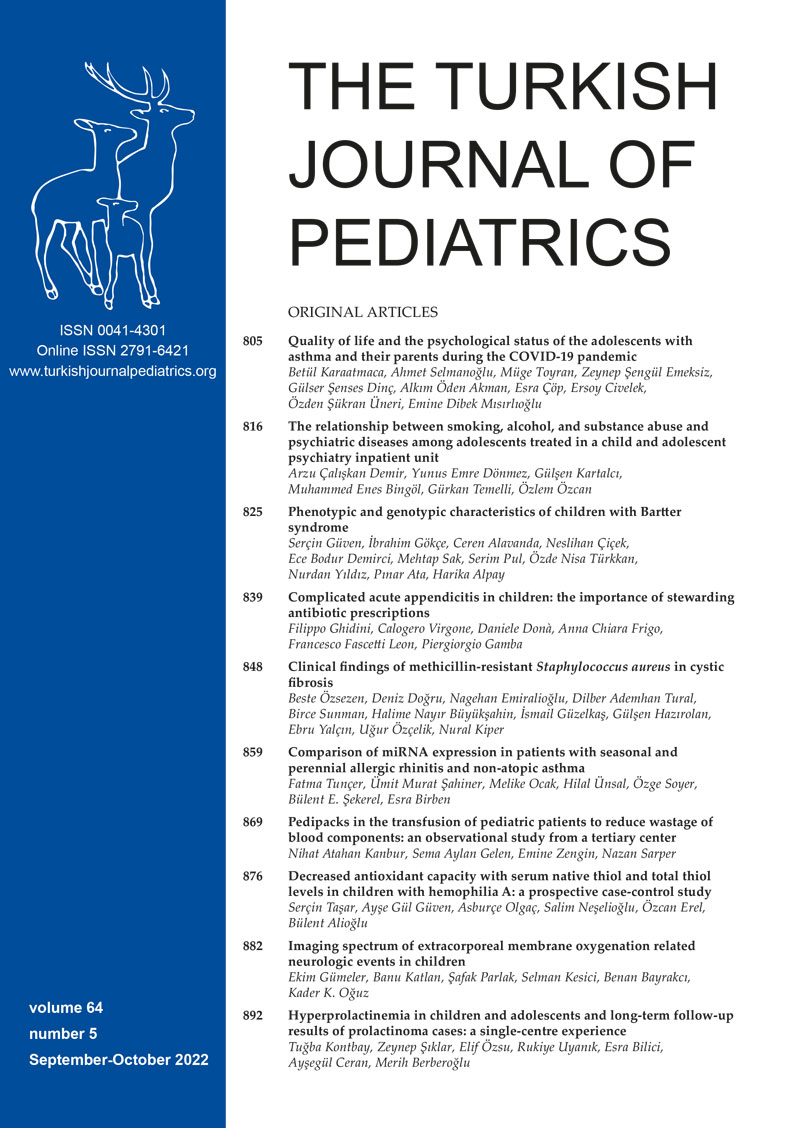Abstract
Background. Experimental studies have addressed the role of oxidant stress in the pathogenesis of Hemophilia A. This study aimed to determine whether dynamic thiol-disulfide exchange, a recently recognized cellular defense system against oxidative stress, is disturbed in children with hemophilia A.
Methods. This prospective case control study included male children with hemophilia A (n=62) and randomly selected healthy age and sex-matched controls (n=62). Serum native thiol, total thiol and disulfide levels were analyzed with a novel spectrophotometric method. Ratios of disulfide/total thiol, disulfide/native thiol, and native/total thiol were calculated. Statistical comparisons were made using the independent samples t-test or the Mann-Whitney U test, according to whether the data were normally distributed or not.
Results. Serum native thiol (385.0 ± 35.9 versus 418.0 ± 44.3, respectively; p < 0.001) and total thiol (424.2 ± 38.7 versus 458.0 ± 46.3, respectively; p > 0.001) levels were significantly lower in children with Hemophilia A compared to controls. Children with hemophilia A had significantly lower serum native thiol to total thiol ratio than controls (p=0.024). Serum disulfide levels of children with hemophilia A were close to controls (19.2 [17.6- 22.1] versus 19.8 [17.8- 21.2]), respectively; p=0.879) whereas disulfide to native thiol ratio (p=0.024) and disulfide to total thiol ratio (p=0.024) were significantly higher.
Conclusions. Decreased antioxidant capacity with levels of serum native thiol and total thiol in children with hemophilia A might be regarded as evidence for the disturbance of thiol/disulfide balance. Antioxidant treatment can be a future target of therapy in children with hemophilia A.
Keywords: Hemophilia A, children, oxidative stress, thiol
Copyright and license
Copyright © 2022 The Author(s). This is an open access article distributed under the Creative Commons Attribution License (CC BY), which permits unrestricted use, distribution, and reproduction in any medium or format, provided the original work is properly cited.














